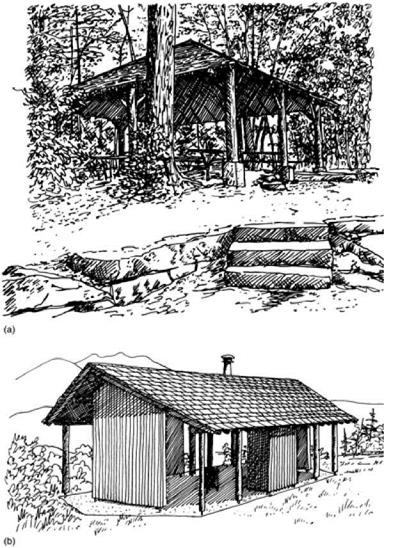In many outdoor areas the climate and the activities taking place demand that plenty of drinking water is available. Hot, dry weather and any form of exercise can result in dehydration; food utensils might need washing, as might hands or fruit. Water on the site, such as a stream or lake, might not be safe to drink, either from pollution or from bacterial infection such as beaver fever in North America. While visitors should be encouraged to bring their own water, they may not be aware of how much they need. Therefore taps or drinking fountains may be supplied, particularly in rural or urban fringe sites where visitors may be less aware of the need to bring their own supplies. Drinking fountains can be
 |
Two examples of picnic shelters: (a) This old
shelter at a state park in Maine, USA, still exists from the 1930s Civilian Conservation Corps (CCC) design. It has stood the test of time well. Sturdy uprights support a shingle roof. Picnic tables are set out beneath. (b) This shelter also has a shingle roof and some side windbreaks. Inside is a stove
as well as tables (not shown in the drawing).
Glacier National Park, British Columbia, Canada.
mounted on simple but elegant wooden posts around the car park or at toilet blocks. Fountains are hygienic to use, waste little water as they are self-closing, and prevent people from using water for other purposes to which they might be tempted by ordinary taps (faucets). If water is provided, a mains supply can often be brought in relatively easily if no on-site sources exist, or water can be filtered from a stream and treated on site.



